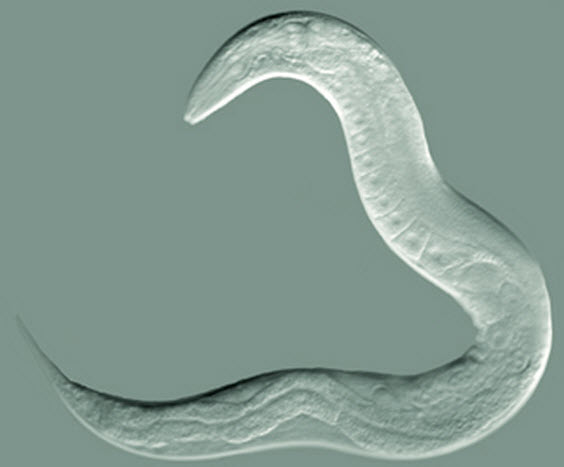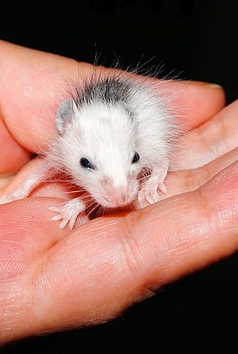Worm research in life extension leads scientists to discover new metric to track aging
December 10, 2015

C. elegans roundworm (credit: The Goldstein Lab)
When researchers at The Scripps Research Institute (TSRI) in California administered an antidepressant called mianserin to the Caenorhabditis elegans roundworm in 2007, they discovered the drug increased the lifespan of the “young adulthood” of roundworms by 30–40 per cent.
So, does that mean it will work in humans? Not necessarily. “There are millions of years of evolution between worms and humans,” says TSRI researcher Michael Petrascheck. “We may have done this in worms, but we don’t want people to get the impression they can take the drug we used in our study to extend their own teens or early twenties.”
Nonetheless, the researchers are now aiming to find out how the drug worked. In a study published Dec. 1 in an open-access article in the journal eLife, the researchers report they treated thousands of worms with either water or mianserin. Then they looked at the activity of genes as the worms aged, compared to the activity of genes in young adults.
Curiously, as the worms aged, the team observed dramatic changes in gene expression: groups of genes that together play a role in the same function were found to unpredictably change expression in opposing directions — making it difficult to predict the effect of drugs, for example.
Extending youth only works at the right time of life
They’ve called this phenomenon “transcriptional drift.” And by examining data from mice and from 32 human brains aged 26 to 106 years, they confirmed that it also occurs in mammals.
And that means transcriptional drift can be used as a new metric for measuring age-associated changes that start in young adulthood, they believe. Using this new metric in their worm research revealed that treatment with mianserin can suppress transcriptional drift, but only when administered at the right time of life.
By 10 days old, treated worms still had the gene expression characteristics of a three-day-old — physiologically they were seven days younger. But by 12 days, the physiological changes required to extend lifespan were complete and lifelong exposure to the drug had no additional effect.
So how does this work? They suggest that mianserin blocked signals related to the regulation of serotonin and this delayed physiological changes associated with age, including transcriptional drift and degenerative processes that lead to death. But the effect only occurred during young adulthood; the duration of this period of life was significantly extended.
What about us mammals?

(credit: Kapa65/Pixabay CC)
“How much of our findings with regards to lifespan extension will spill over to mammals is anyone’s guess; for example, the extension of lifespan might not be as dramatic,” says Petrascheck.”
Meanwhile, the anomalous findings have opened up new avenues of research for the team and are likely to spawn a wealth of research by others.
A significant next step for the team will be to test the effect in mice and to investigate whether there are any side effects. Different environments could also produce different results and this will need to be explored. They would also like to test whether the impact is different for different organs in the body.
Abstract of Suppression of transcriptional drift extends C. elegans lifespan by postponing the onset of mortality
Longevity mechanisms increase lifespan by counteracting the effects of aging. However, whether longevity mechanisms counteract the effects of aging continually throughout life, or whether they act during specific periods of life, preventing changes that precede mortality is unclear. Here, we uncover transcriptional drift, a phenomenon that describes how aging causes genes within functional groups to change expression in opposing directions. These changes cause a transcriptome-wide loss in mRNA stoichiometry and loss of co-expression patterns in aging animals, as compared to young adults. Using Caenorhabditis elegans as a model, we show that extending lifespan by inhibiting serotonergic signals by the antidepressant mianserin attenuates transcriptional drift, allowing the preservation of a younger transcriptome into an older age. Our data are consistent with a model in which inhibition of serotonergic signals slows age-dependent physiological decline and the associated rise in mortality levels exclusively in young adults, thereby postponing the onset of major mortality.